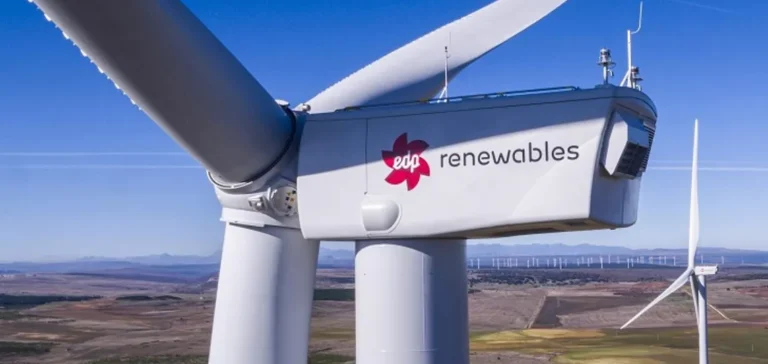EDP Renovaveis, the renewable energy subsidiary of Energias de Portugal (EDP), reported a 56% decrease in net profit for the first half compared to the same period last year. This contraction comes despite a rise in electricity production and higher revenue. The company attributes this decline mainly to the decrease in gains from the sale of stakes in wind and solar parks, a practice that remains a regular source of funding for new projects.
Fewer asset sales, profits under pressure
During the half-year, EDP Renovaveis recorded only €12mn ($13.87mn) in capital gains from asset disposals, compared to €171mn a year earlier. The company stated that the pace of asset sales varies according to its project calendar, while reaffirming expectations for additional gains in the second half. Net profit thus amounted to €93mn ($107.5mn), below the average analyst forecast of €118mn.
Excluding the impact of asset sales, EDP Renovaveis’ recurring net profit increased by €80mn during the period. According to the company, this result reflects an improvement in the profitability of the operating asset portfolio, driven by increased output and enhanced operational efficiency.
Revenue and output rising
Half-year revenue reached €1.4bn ($1.62bn), up 18%, supported by a 12% rise in electricity generation to 21.2 terawatt-hours. North America accounted for 60% of total production, while Europe represented 27%. Consolidated earnings before interest, tax, depreciation, and amortisation (EBITDA) stood at €948mn ($1.09bn), a slight decline of 1% year-on-year.
Excluding capital gains, recurring EBITDA increased by 20%. At the end of June, EDP Renovaveis’ total installed capacity reached 19.6 gigawatts, a rise of 3 GW compared to the previous year. The United States accounted for around 44% of this capacity, with North America surpassing half of the company’s global total, compared to 35% for Europe.
Capacity under development and outlook
EDP Renovaveis reports having 2.3 GW of capacity under construction, with delivery expected on schedule and within budget, supporting expected growth of around 2 GW in 2025. The group now operates in twenty-eight countries across three continents. The company’s business model is based on regular arbitrage between operating plants and partial disposals, a strategy that shapes its short-term financial performance.






















